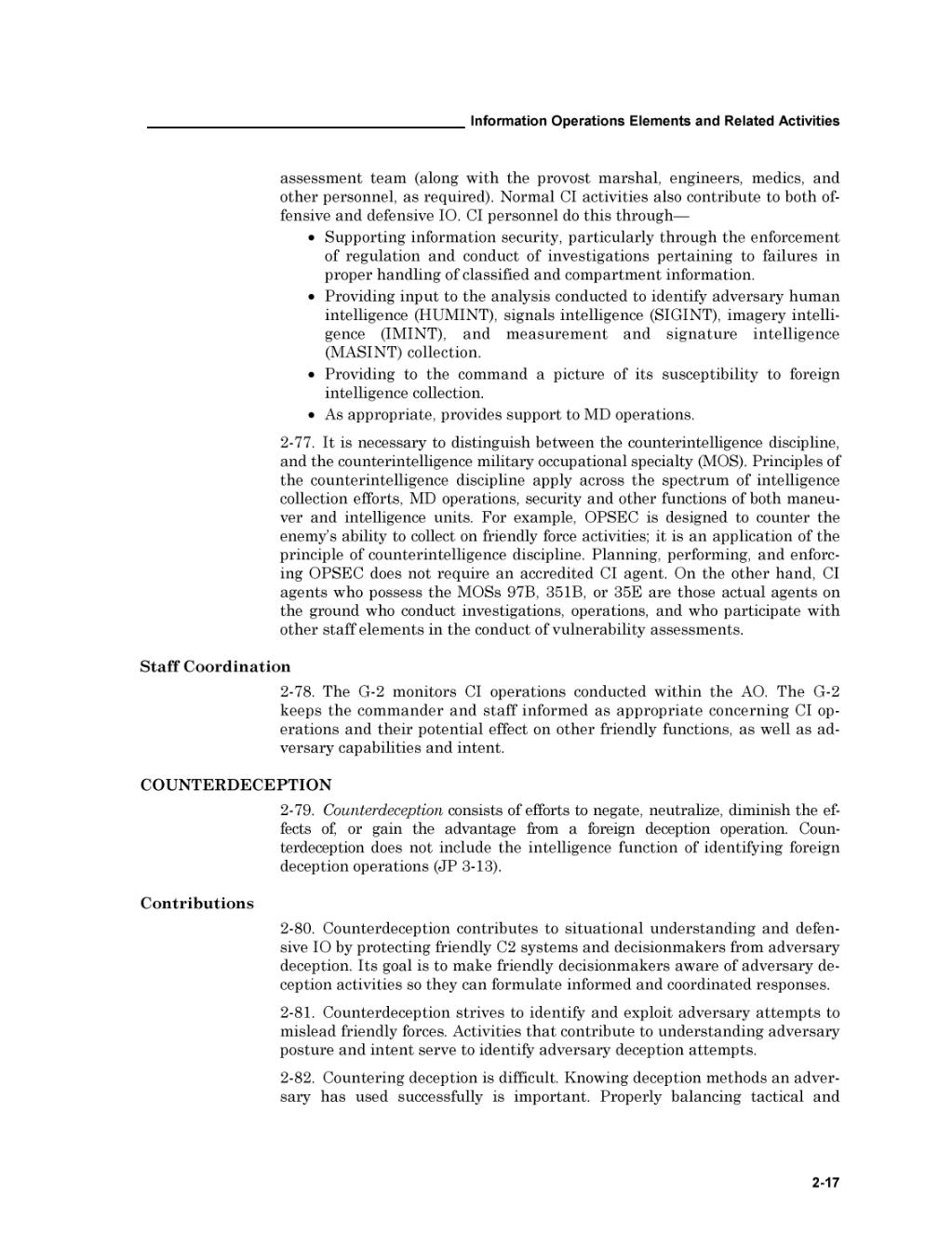lnfmnution Opuntinns Elamants and R•ln•d Activitin assessment team (along with the pmvnst marshal, engineers, medics, and other personnel, as required). Normal C1 activities also contribute tn both of fensive and defensive IO. CI pcmonnnl do this through- • Supporting information security, particularly thmuyzh the enlbmernent of ieizulation and conduct of investigations pertaining to failures in proper handling 0t'cl.assiiied and mmpartment information. · Pmviding input to thu analysis wnductcd m identity adversary human intelligence (PIUMINT), signals intelligence (SIGINT), imagery intclli gence (IMINT). and measurement and signature intelligence (MASINT> ttillection. • Providing to the command a picture of its susceptibility tu foreign intelligence cullecrion. • As appropriate, pmvides support to MD operations. 2—77. It is necessary to distinguish between the counterintelligence discipline, and the oounterintelligenee military occupational specialty (MOS). Principles of the counterintelligence discipline apply across the spectrum of intelligenoe collection efforts. MD operations, security and other functions ofboth maneu- ver and intelligence units. For example, OPSEC is designed to counter the enerny’s ability to nolieut on friendly three activities; it is an application of the principle uf cmxnterintelligenw discipline. Planning, pethrming, and un{'pm· ing OPSEC docs not requim an accredited CI agent, On the other hand, Cl agents who possess the MOSs 9713, 3518, or 35E arc those actual agents on the ground who conduct invustigzntinns, operations, and who pzwticipzitu with other staff elements in the conduct of vulnerability assessments. Staff Coordination 2»7B, The 0-2 xnonimrs CI operations mnducted within the AO. The G-2 keeps the commander and stef? informed as appropriate concerning C1 0p· eratinns and their potential effect on other friendly functions, as well as :1d· versavy capabilities and intent. COUNTERDECEPTION 2-79. Caunmrdecepiakm consism of cliurts to negate, neutraljme, diminish the ei! fmts uf, ut- gain the advantage from a xbzeign dmepdun operation. Coun- tcrdweprion does nut include the intelligence function of identifying foreign deception npcratirms (JP 3-13). Contributions 280. Cnunterdeccption contributes to situational understanding and defen- sive IO by protecting friendly C2 systems and decisionmnkws [rom adversary deception. Its goal is to make friendly decisionmakers aweue of adversary de- ception activities so they can formulate informed and ccxmiinmed responses. 2-Bl. Cuunterdeception strives to identify and exploit adversary attempts tn mislead lriendly fumes. Activities that contiibute tu understanding adversary posture and intent serve to identify adversary deception attempts. 2~é$2. Cuuntering deception is difficult. Knowing deception tnethmis an advei-~ sary has used successfully is ixnprn-tant. Properly balancing tactical and 2-11
